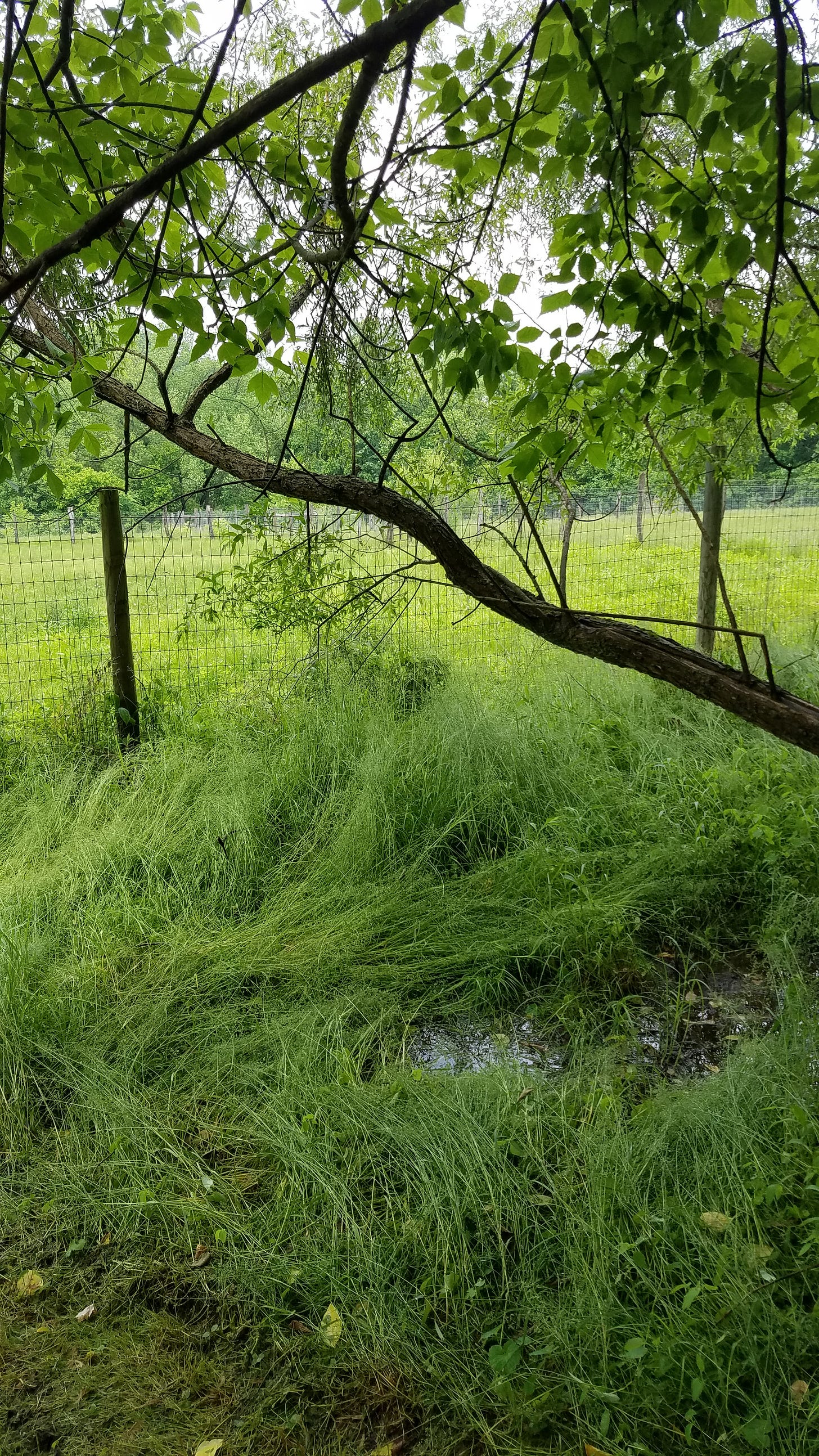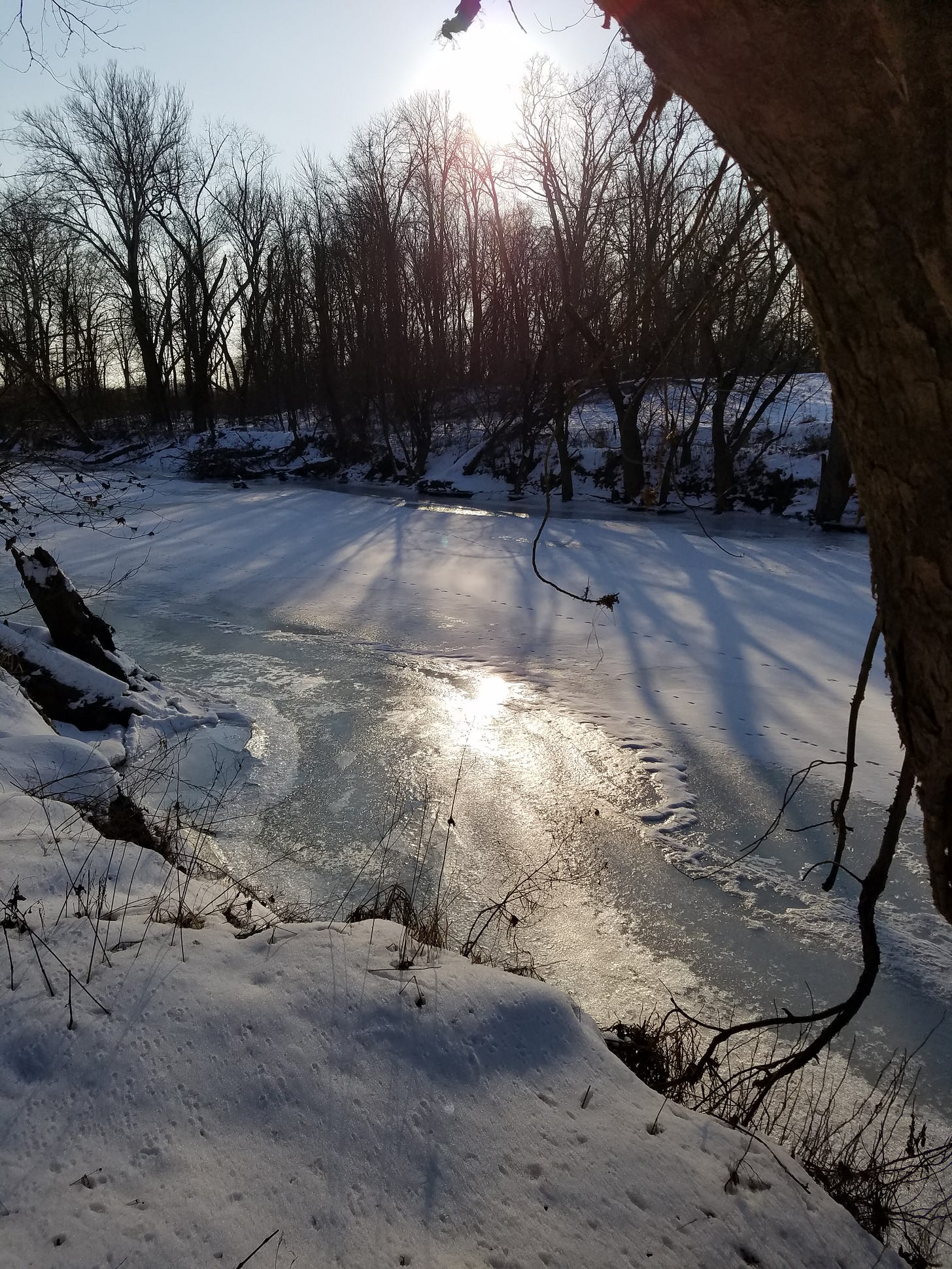Portrait of a neighbor
Trigger warning: Anti-lawn rhetoric
When I moved to the farm 21 years ago I became reacquainted with the nextdoor neighbor, whom I remembered from childhood days when my grandparents lived here. He was a dangerous man who would stop and talk you to death if you were unlucky enough to be caught out in the open when he passed by on his mower. A man much wider in the middle than on top or bottom, he suffered regular bouts of gout, and was most at home on his Kubota or John Deere, which doubled as transportation. He was so averse to dismounting his machine that he ran over every stick and branch that he encountered and claimed this practice sharpened his blades. For decades he mowed upwards of 10 acres regularly throughout the mowing season, including a vast sloping front lawn better suited to a manor house than his modest ranch-style home.
Though his front yard boasted two majestic pin oaks and a nice Japanese maple specimen, this neighbor viewed trees in general as bothersome impediments to mowing. He seemed completely oblivious to the fact that trees were providing much needed shade and soil stabilization, and openly admitted to disliking them. Now that he has passed on, his son-in-law seems poised to continue the traditions of mowing and tree-hating. Neither man stands out as odd in the neighborhood: the act of mowing is, if not an obsession, at least a pleasant, useful, and neccessary pastime. It is something that must be done lest territory be lost to brush and ceded to mother nature. Potential environmental impacts do not enter into consideration.
There are loads of articles written about why lawns are problematic, usually focusing on the excessive use of fossil fuels, synthetic chemicals to fertilize and kill bugs and weeds, and water for irrigation. What is rarely discussed, but is of great concern to me, is the effect of mowing on the movement of water through the landscape. My neighbor never irrigated and used no chemical besides countless gallons of gasoline, but his mowing created compacted soil and accelerated runoff—not inconsequential issues for those downstream.
During our increasingly strong storms, rainfall hits the compacted clay of his front lawn and rolls in unimpeded sheets into my adjacent driveway which becomes a streambed carrying water quickly to the lowest spot. From here it enters the small channel that rapidly carries it to our small river and on to the Ohio River. My intent isn't to complain about the high cost of driveway maintenance, but to describe in microcosm what is happening up and down the valleys of southeast Ohio. Not only do agricultural fields, roads, and rooftops speed rainfall quickly on its way, lawns do the same.
Doug Tallamy’s Homegrown National Park movement primarily promotes reducing lawn space for the purpose of making room for native plants, but gives a nod to the effect of such plantings on flood control efforts. Were the neighbors field covered in native trees, (easily achievable by leaving areas unmowed!) rainfall would be intercepted and slowed by millions of leaves before even reaching the ground. Leaf litter, sticks, and roots would slow it further. By infiltrating rather than becoming surface runoff, this rainfall would be absorbed by soil and replenish groundwater, holding it in place for future use. This process is encapsulated in the motto “slow it, spread it, sink it.”
Granted, no other resident has anywhere near the acreage my late neighbor presided over. As well as his ridiculously large front yard, he maintained several football fields worth of backyard bottomland. Taken together however, lawns small and large shed enormous amounts of water that rushes to rivers unimpeded. Here on the farm, it's not merely runoff from the adjacent property but from many uphill neighbors that collects and descends upon us. Unlike my neighbors I view this water as a resource and I work to slow, spread, and sink it. Major tactics thus far have included increasing tree cover wherever possible and digging the ponds. My next project is to repair the stream—really an incised drainage ditch—that bisects the property. This will mostly entail throwing logs and branches in it to create check dams.
“Slow it, sink it, spread it" isn't rocket science. It's more like common sense, but requires a change in mindset. Runoff might be viewed as a waste product by my neighbors, but I value it as I do wood chips or cardboard. I can put it to work growing big trees and keeping pastures green during dry spells. Did the universe thoughtfully place me here at the bottom of the hill to fulfill the purpose of valuing rainful and putting it to good use? Maybe, maybe not, but since I'm here I'll make the most of it.







And it is so hard to get through to people like your former neighbor. I've often wondered how to even broach some of these subjects with people who refuse to listen.
We definitely mow very infrequently on our acre and a quarter. I would like to turn a few low areas into more wetland planted areas but have run into resistance with my husband on that, mostly because of our deer infestation.